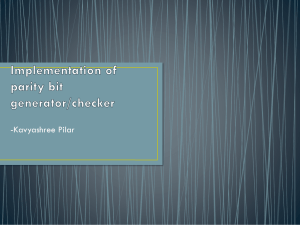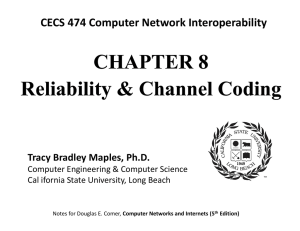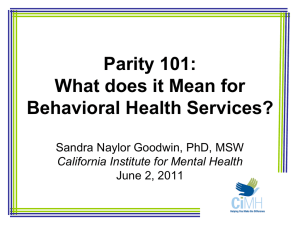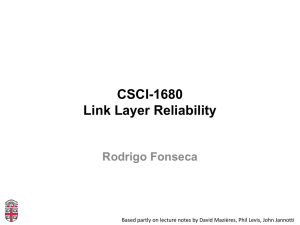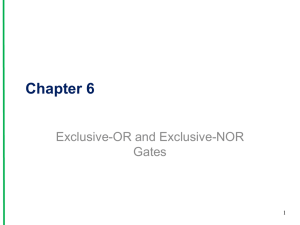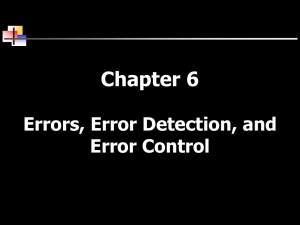Error Detection Methods
advertisement
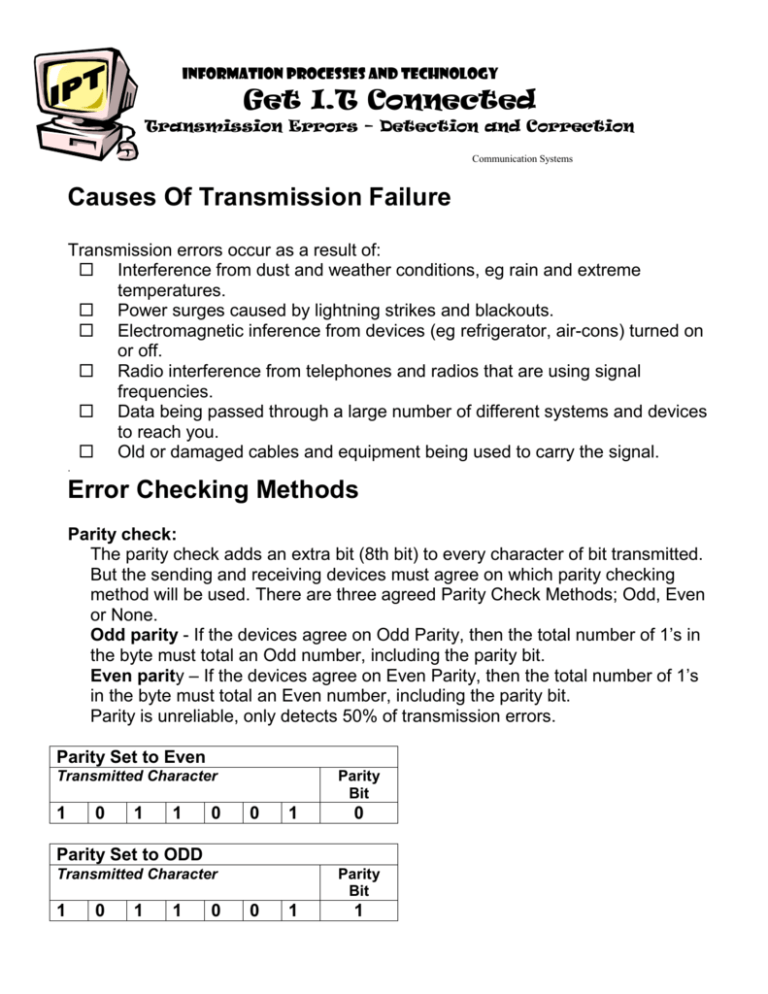
Information Processes and Technology Get I.T Connected Transmission Errors – Detection and Correction Communication Systems Causes Of Transmission Failure Transmission errors occur as a result of: Interference from dust and weather conditions, eg rain and extreme temperatures. Power surges caused by lightning strikes and blackouts. Electromagnetic inference from devices (eg refrigerator, air-cons) turned on or off. Radio interference from telephones and radios that are using signal frequencies. Data being passed through a large number of different systems and devices to reach you. Old or damaged cables and equipment being used to carry the signal. . Error Checking Methods Parity check: The parity check adds an extra bit (8th bit) to every character of bit transmitted. But the sending and receiving devices must agree on which parity checking method will be used. There are three agreed Parity Check Methods; Odd, Even or None. Odd parity - If the devices agree on Odd Parity, then the total number of 1’s in the byte must total an Odd number, including the parity bit. Even parity – If the devices agree on Even Parity, then the total number of 1’s in the byte must total an Even number, including the parity bit. Parity is unreliable, only detects 50% of transmission errors. Parity Set to Even Transmitted Character 1 0 1 1 0 Parity Bit 0 1 0 Parity Set to ODD Transmitted Character 1 0 1 1 0 Parity Bit 0 1 1 Information Processes and Technology Get I.T Connected Transmission Errors – Detection and Correction Communication Systems Problems with parity checking: Bit swapping: one of the 1s in the data byte is swapped with one of the zeros then the parity wouldn’t change and error is not detected. Any byte with an even number of errors will be undetected. Rarely used in modern communications protocols. From 2002 HSC – Multiple Choice 20. The following seven-bit ASCII character and parity bit were transmitted: 0011010 0 Which of the following examples would cause the receiver to request that the message be re-sent? ASCII character Parity bit (A) 1011010 1 (B) 0011011 1 (C) 0011011 0 (D) 0011010 0 Information Processes and Technology Get I.T Connected Transmission Errors – Detection and Correction Communication Systems Checksum is a block error detection method. Block methods rely on dividing a message up into blocks or ‘packets’ of bytes and testing the accuracy of each block, rather than each individual byte. This results in a faster transfer of information Transmitted data is sent as a series of binary or hexadecimal digits. If the 1 digits are added, they give a total which is called a Checksum, which is sent to the receiving computer. The receiving computer then performs the same calculation, and if the numbers are identical, then the data block is error free. If there is a mismatch in the Checksum, there will be an error in transmission. Checksum is a more reliable error checking method than Parity checking. Example: 1 1 1 1 1 1 1 1 1 0 0 0 0 1 1 The Checksum = addition of all the 1’s = 11 or in binary code (0001011) Another Example: 27 + 18 + 107 + 3 + 74 + 0 + 63 + = 292 292 ÷ 256 = 1 remainder 36, therefore the checksum = 36 Checksum must be a one-byte value from 0 to 255. If greater divide by 256 and use the remainder. If the count matches it is assumed the complete transmission was received. Detects 90% of transmission errors. Does not reveal which byte or bytes are faulty and therefore the entire packet will have to be retransmitted to fix the error. Checksum Diagram Problems with Checksum: Checksum delivers unreliable results for large blocks of data, and is no longer used in the transmission of data. Information Processes and Technology Get I.T Connected Transmission Errors – Detection and Correction Communication Systems From 2004 HSC – Multiple Choice Information Processes and Technology Get I.T Connected Transmission Errors – Detection and Correction Communication Systems CRC or Cyclic Redundancy Check is the most common form of error checking in a communications link as it is the most reliable. It operates in a similar way to Checksum in that it is a block detection method, however it differs at it treats the whole block of data as a binary or hexadecimal sum, rather than dividing it up into packets. The total sum of the block is then divided by a constant (69665 16bit CRC or 39882463 32-bit CRC) and the constant and remainder is sent through to the receiving computer. The receiving computer the n performs the same calculation on the data and if the remainder is the same as the sent remainder, then the message is sent error-free. If the remainders do not match, there is an error in transmission. CRC is capable of picking up 99.999% of errors (when using 32 bit CRC). From 2003 HSC – Core Questions Question 23 (9 marks) Use a SEPARATE writing booklet. Site Seeing Ltd is a Sydney-based company that creates websites for people and businesses all over Australia. Site Seeing Ltd uses a system that totally replaces face-to-face communication between the employees and the clients. The initial contact with the client is through telephone, fax and email. After the design specifications for the client’s new website are established, a range of communication technologies are used to support the work of the Site Seeing Ltd project team and communication between Site Seeing Ltd and the client until the project is completed. These technologies include: email; web-based file storage, retrieval and document sharing; Internet online discussion and chat facilities; teleconferencing and video-conferencing. (a) Identify and describe TWO transmission error-checking methods that could be used to help check for errors in Site Seeing Ltd’s communication links. 3 Marks

